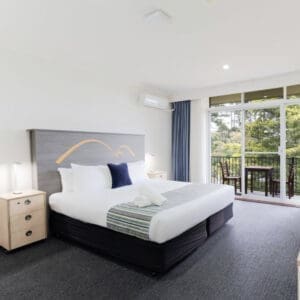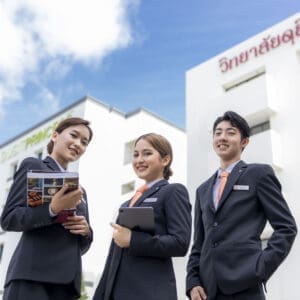 The everyday use of smartphones spills over to the tourist experience, according to Dr Dan Wang of the School of Hotel and Tourism Management (SHTM) at The Hong Kong Polytechnic University and co-authors in a recently published research article.
The everyday use of smartphones spills over to the tourist experience, according to Dr Dan Wang of the School of Hotel and Tourism Management (SHTM) at The Hong Kong Polytechnic University and co-authors in a recently published research article.
The researchers argue that “understanding how the smartphone shapes the tourist experience cannot be separated from the way it is used in one’s everyday life”, to the extent that “everyday life and travel should not be viewed as completely separated entities, but rather special cases of each other”. The impact of technology on travel evolves, they suggest, “as the traveler gains experience using new technologies” and the benefits those technologies bring.
Smartphone use is most definitely transforming our daily lives, allowing us to listen to music, take photographs, socialise with friends, obtain information and make purchases wherever we want. This should have clear implications for travel, but the researchers note that tourism is still seen as somehow distinct from everyday life. It is time that travel is no longer seen as “a temporary reversal of everyday activities” that essentially involves “a no-work, no-care, no-thrift situation”, they argue. With friends and family – and the workplace – now just a swipe away, it is increasingly difficult to truly switch off, leading to a “decapsulation” of the tourist experience.
The researchers argue that there is a “mutual penetration of the experiences from the travel context and everyday life context”. Although keeping in constant contact with those at home and having a wealth of information about the destination in one’s pocket may diminish the sense of adventure and escape, it can enhance the travel experience. Yet even though there is a great deal of evidence that tourists use mobile technology before, during and after their trips, a thoroughly convincing explanation for why that is occurring has not been put forward.
Most often, technology adoption is seen as being influenced by perceived usefulness, ease of use and the potential for risk, without any appreciation of how that adoption takes place over time. This, argue the researchers, “contributes little to our understanding of how smartphone use actually shapes trip planning and, consequently, the tourist experience”. Instead, they suggest that smartphones structure our everyday lives in certain ways, which in turn influences how we travel.
To determine the extent to which smartphone use spills over from everyday life into tourism, the researchers carried out in-depth interviews with experienced US travellers. The interviewees owned and used smartphones running one of the top three operating systems – iOS, Android and Blackberry. They had also travelled for leisure at least three times in the past year, with at least one trip occurring in the three months leading up to the interview. Finally, they subscribed to unlimited data plans, which was likely to encourage the most frequent smartphone use.
The interviewees were fairly evenly divided between the sexes and represented a wide range of age groups, from 18-30 to 61-70. They were asked about their everyday use of smartphones, the subsequent changes in their communication and information consumption, and whether smartphones had influenced both their “travel planning and experience” and the “functions and information services” they used while travelling.
The uses to which the interviewees put smartphones in their daily lives fell into five broad categories: communication, entertainment, online social networking, information search and acquisition, and facilitation (of services such as banking and navigation). Although the uses varied by interviewee, a remarkably common narrative emerged. Most interviewees would wake up to the smartphone alarm and then browse the news, connect to a social network or read email. They tended to listen to the radio or music on the way to work, periodically check the weather, news and stock prices during the day, shop, collect travel ideas or pay bills during lunch hours, and watch TV and/or surf the Internet in the evening.
The majority of the interviewees said that “smartphones were more or less part of their life”. The devices made them feel “more connected”, “more informed”, “more innovative” and “more productive”.
The researchers identify five distinct ways in which smartphones changed the interviewees’ lives: increased communication with family and friends, the filling of all downtime, increased information search activities, greater interest in exploring technology and the partial replacement of laptops/desktops. The latter change in particular is transforming activities that were once location-specific to those that can be performed anywhere. That transformation is further fuelled by the multifunctional nature of smartphones, the researchers note. Everyday activities such as listening to music, navigation and taking photos used to be completed separately with mp3 players, GPS and cameras before smartphone use, but now these can be performed “with only one device”.
Given that smartphones are concentrating our use of technology and making us more aware of its benefits, it should not be surprising that the researchers found considerable overlap between the everyday and travel uses of smartphones. Uses during travel largely originated in the interviewees’ daily lives “because of habits and social norms and obligations”.
Of the activities that smartphones influenced or reshaped during daily life, only a handful differed when it came to the travel experience. These understandably included such travel-specific activities as flight tracking and check-in and hotel booking. When describing their smartphone use during travel, the interviewees were explicit about the “spillover” effects. For instance, they noted “that they felt more social obligations during trips because they got used to frequent communication” in their daily lives. Hence, “routines and habits were carried to the context of travel”, the researchers explain.
When the interviewees described the changes in the tourist experience brought about by smartphone use, they were almost universally positive and largely in accord with those
experienced in everyday life. The greater connectivity that the devices afforded helped the informants to feel “more connected with family and friends”, “more secure” and “less isolated”. The entertainment options made available allowed the interviewees to “be themselves” while travelling. Facilitation apps afforded greater convenience, and enhanced information acquisition and search abilities provided the flexibility to re-plan and re-schedule while travelling.
As the researchers put it, smartphone use “clearly has the potential to substantially alter the tourist experience”, largely through extending “the structures and spirit of smartphones” to the travel context. This, they write, helps to “de-exoticise” tourism by confirming it as “a special state of technology use that is connected with other settings”. Practitioners should be aware of “the interconnectedness of different locales, contexts, and channels of information and communication for today’s smartphone-equipped tourists”, they conclude.
Wang, Dan, Zheng, Xiang and Fesenmaier, Daniel R. (2014). Smartphone Use in Everyday Life and Travel. Journal of Travel Research, 53(3), 1-12.















